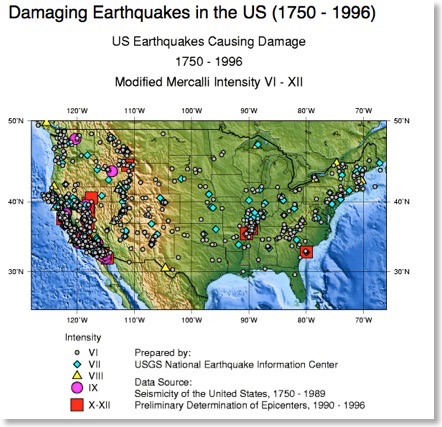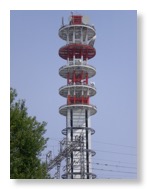Seismic risk
Seismicity & Telecom Network Vulnerability
23 08, 11 17:30
Today’s magnitude 5.8 earthquake in the Washington area came just as I was putting my thoughts together on seismic risks and telecom networks. This was in part inspired by my May trip to Japan, including Tokyo and Sendai, and discussions and observations while there. (During the Vietnam War my military service dealt with underground nuclear test detection so seismic issues are not entirely new for me.)
While we usual think about seismic threats as only applying to California and Alaska, so very large earthquakes have occurred elsewhere during the history of our country. These include the 1811 magnitude 7.7 New Madrid (Missouri) earthquake and the 1886 magnitude 7.2 Charleston (South Carolina) earthquakes. Thus there is a real risk of a major earthquake in lots of places although with a small probability.

I am concerned that the telecom industry and regulators have not connected this fact with the large scale phasein of fiber optics as the dominant long haul communications technology as well as a key factor in cellular backhaul. In the past, long distance microwave had a major role in this area and that is diminishing. Microwave systems can be readily made earthquake resistant by strengthening the towers that hold the antennas and the nearby equipment buildings.


In an earthquake that results in ground fissures, fiber optic lines miles apart could suffer related damage so an analytical assumption that they are independent would be wrong. Realistically, fiber facilities sometimes end up in the same conduit so independence of reliability can be more suspect.
During the Cold War the Pentagon took actions with FCC to influence network design first to improve reliability in a post nuclear attack scenario and later to inhibit microwave interception by the Soviets. The former was done under the AT&T monopoly, but the later was done after the onset of real competition for AT&T.
While such direct government intervention into network design might not be appropriate in this case, it appears that there is no hard data on the relative use of fiber versus microwave for long haul transmission (or cellular backhaul) in areas with a risk of large earthquakes. Perhaps industry and the appropriate federal agencies should open a dialogue on the topic.
Comments



![Validate my RSS feed [Valid RSS]](valid-rss-rogers.png)

